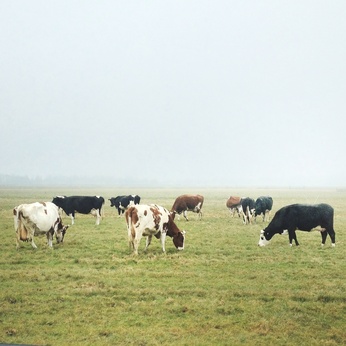Increasing the intervention price for dairy products is neither a dirty word nor a magic wand
 Over recent weeks, all the voices – and there have been quite a few – calling for an increase in the intervention price for dairy products, have run into a wall of ice at the European Commission, which has responded with the argument of “market orientation” and the old story of milk lakes and butter mountains.
Over recent weeks, all the voices – and there have been quite a few – calling for an increase in the intervention price for dairy products, have run into a wall of ice at the European Commission, which has responded with the argument of “market orientation” and the old story of milk lakes and butter mountains.
The debate about how best to manage agricultural markets is key for the future of Europe’s dairy sector. It is therefore necessary to go beyond simple discourse and properly assess all options before rejecting any of them. Extreme attitudes for or against do nothing but weaken the Union’s ability to put in place an ambitious value-for-money policy at a time when, all around the world, the big players are developing offensive policies.
What do we mean by ‘intervention tools’?
Firstly, intervention is based on a public purchasing scheme that is triggered if the market price falls to a fixed price defined at EU level. If used properly this system offers good value for money for taxpayers. Public authorities buy when markets are low and sell when prices recover. So this is not a debate about wasteful public spending or about an inappropriate use of the EU budget. The public purse should in fact make money out of the system.
“Why wouldn’t it be credible to slightly adjust the intervention price at least to take into account the cumulative inflation since 2007 – setting it at 25 cents?”
Secondly, in a market-oriented system, intervention prices are fixed below production costs to avoid the situation where non-competitive producers produce only to sell into public intervention stocks rather than for the market.
The question, which is easy to ask, but not easy to answer in an EU of 28 Member States is:
Does the current trigger level price of 21.7 cents provide an adequate safety net to prevent competitive farmers from collapsing under exceptional circumstances? What level would be adequate and low enough to discourage producers who might be tempted to make a living from such a scheme?
Thirdly, we might ask why such a system is still needed today? One could be tempted to answer that we have not found any better ways of ensuring market stability, ways that are easy to implement and which offer a truly European response in difficult market conditions (having in mind that a key objective of EU agricultural policy is to stabilise markets and to maintain a dynamic agricultural production all across the EU) – but this would not be a sufficient answer. In recent years – especially in 2009 – the intervention price has served to set a floor to the market – in other words a limit beyond which a crisis cannot worsen further. This means that the intervention price is not merely a financial tool but also plays a psychological role.
Until 2007, before being set at 21.7 cents, the intervention system was activated on yearly basis, which indeed does not make sense. Until now only the deep 2009 crisis had triggered intervention.
If we want the safety net policy to remain fit for purpose, its instruments must remain connected to economic reality without distorting market signals. In this regard, while production costs vary considerably across the EU, recent studies have shown that, for instance, in Bavaria, they are running at 29.6 cents whereas in Italy when they reach 34 cents farmers are no longer making money. While it seems that some farmers in Ireland can live with 26 cents – they are probably the most efficient in Europe.
In light of the above, why wouldn’t it be credible to slightly adjust the intervention price at least to take into account the cumulative inflation since 2007 – setting it at 25 cents?
This would be a positive political signal to be sent by Commissioner Hogan to economic actors across EU of his willingness to maintain on track the stable dairy policy orientation that was initiated when the decision to phase out the milk quotas was made. This would strengthen the confidence of economic actors in EU safety nets policy increasing their capacity to further invest in a post quotas era.